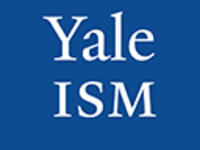
 Picturing Faith
Picturing Faith
Religious America in Government Photography
1935-1943
On display at the Yale Institute of Sacred Music
409 Prospect Street, New Haven
From January 19 - February 26, 2010, Weekdays 9-4
Public Reception on Thursday, January 21, 4:30-6
Institute of Sacred Music Great Hall
In 1935 in order to generate support for New Deal reforms, the Historical Division of the Farm Security Administration (FSA) began making a photographic survey of economic struggle and social dislocation in Depression era America. Historical Division director, Roy E. Stryker, also wanted to produce a composite picture of American society. So, in the “scripts” he sent out to his photographers, he asked them to include pictures of America’s religious life. These “sociologists with cameras” entered the homes and churches of the poor as well as the middle class. They photographed people in prayer, domestic shrines, dinner graces, parishioners going into their churches, revival meetings, and even the gospel trucks of itinerate preachers. While many of the FSA (and later Office of War Information) photographs are familiar, this is the first exhibition of how government photographers represented religion during this critical time in our nation’s history.
Picturing Faith is a unique series of photographs showing the place of religion in American society through the lens of some of America’s most well-known photographers—Walker Evans, Dorothea Lange, and Gordon Parks. It also presents the works of equally talented but lesser known photographers—John Collier, Jr. , Marion Post Wolcott, Russell Lee, Jack Delano, and Marjory Collins. Supported by a grant from the Lilly Endowment, the exhibition includes forty-five black-and-white photographs gathered from the FSA/OWI archives of the Library of Congress. Accompanying the photographs are explanatory materials that set the photographs in their historical, artistic, and religious contexts. Viewers will have an opportunity to consider how religious images were used in the political agenda of the New Deal and how people during this period experienced the divine in their lives.
The exhibition is structured around four themes. The first theme, “Religion and Photography,” illustrates the various techniques that photographers use to express the religious spirit. A set of cultural conventions define both who could be religious and what was religious. At times, FSA photographers pictured religion as the intense, inner life of an individual. At other times they saw religion as a community activity where the individual became lost in the group.
The second theme, “Poverty and Religion,” documents the religious lives of the poor. If the main purpose of the FSA photographs was to document America’s economic troubles, where did religion fit into this agenda? Photographers like Dorothea Lange, presented rural life in decay but religious images could work against representing the poor as without hope. While the New Dealers felt that faith had little role in solving America’s economic problems, the FSA photographs show that religion was a vital part of the lives of the poor.
By the end of the 1930s, the goals of the FSA began to shift away from documenting the Depression and New Deal reforms. The third theme, “Celebrating America’s Communal Spirit,” demonstrates how photography was used to support America’s entry into World War Two. In order to present democracy as the alternative to fascism, Roy Stryker asked his photographers to provide evidence of a harmonious, creative, and multiethnic America. Religious behavior was presented as the social glue that held together American communities. FSA photographers ignored religious strife and showed faith as the common ground shared by all Americans.
The FSA photographers also wanted to take “beautiful” pictures. The fourth theme, “Faith without People” shows how modernist canons of style influenced how the FSA photographers represented religion. To make artistic pictures, photographers waited for congregations to move away from their churches. The true and authentic “spirit” of religion was embodied in spaces and structures rather than in pious behavior. While Roy Stryker stressed the sociological nature of the photographic project, some of the most powerful images of faith are those of churches and synagogues emptied of the faithful.
This exhibition challenges viewers to reflect on the ways that belief and ritual is visually represented, and it presents a glimpse of American religions during a tumultuous time of our nation’s history.
The exhibition, curated by Colleen McDannell, Sterling M. McMurrin Professor of Religious Studies and Professor of History at the University of Utah, is presented by Yale Institute of Sacred Music with support from Yale Divinity School. Both the exhibition and the reception are free and open to the public.
For more information, call 203-432-5062.